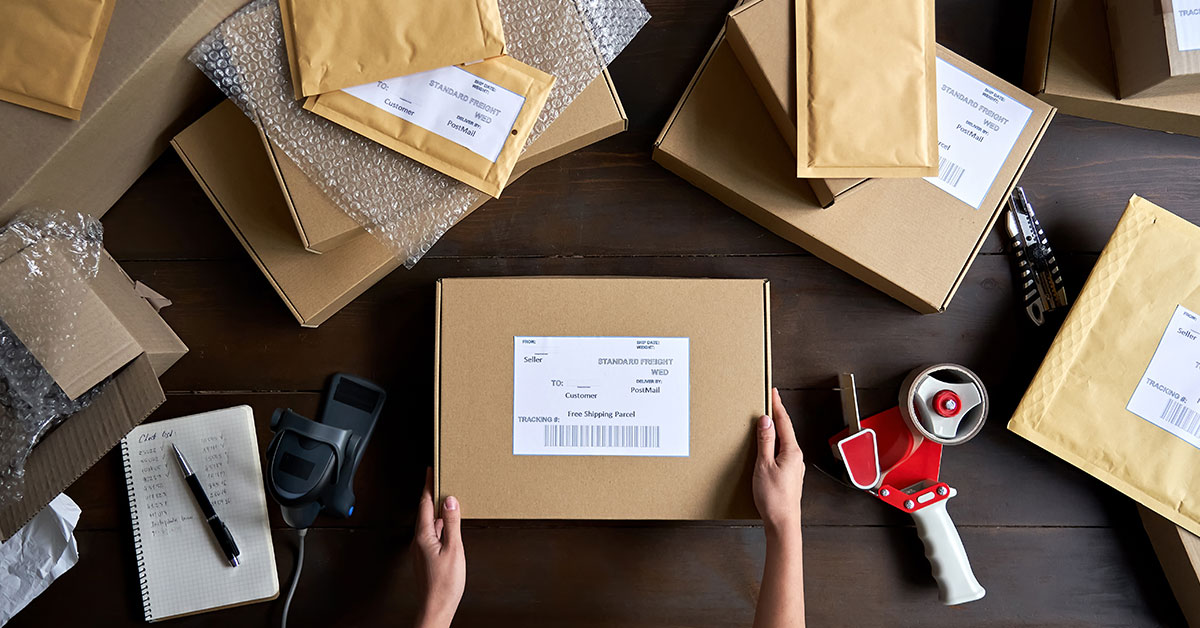


Picking, packing, and shipping represent the three essential order fulfillment processes performed at both warehouses and dedicated fulfillment centers. The basic process is familiar to most people, whether they work in the industry or not. It involves picking goods to be sent, packing them securely, and shipping them via a shipping partner like UPS, FedEx, or the USPS.
The picking, packing, and shipping process used to be one of the most time-consuming aspects of product fulfillment. Pick, pack, ship automation has changed all of that. This newer, more technologically advanced process involves the use of not just human personnel but also dedicated various forms of AI-driven hardware and dedicated fulfillment software.
Business owners looking for a distributor or a fulfillment service should always check first to make sure the service provider utilizes pick, pack, ship automation as a complement to its warehousing and product kitting services. Learn more about this essential service and why it offers such a competitive advantage below.
Also referred to as warehouse automation, pick, pack, ship automation involves using technology and software to support a dedicated warehouse team. Like most forms of modern technology, it isn’t designed to replace human workers. Rather, it reduces busy work and human error, which increases worker efficiency and improves order fulfillment speeds.
Some modern fulfillment centers go a step further by utilizing automated storage and retrieval systems (ASRS). These systems are similar to pick, pack, ship automation tools and can even be used in conjunction with them, but they require minimal human supervision. The machines must be integrated with the distributor’s ERP system and can only be used in certain situations.
Warehouse automation tools can be used to improve just about any pick and pack strategy, but it’s especially effective when combined with wave picking. Wave picking involves tasking each picker with fulfilling multiple orders for products found within the same zone. When each worker is finished, the order moves via conveyor belt or other automated means to the next zone.
Not all fulfillment centers utilize wave picking strategies. Some prefer zone picking, which involves separating the goods stored in a warehouse by type and having pickers work on multiple orders within assigned areas. It’s very common among 3PL providers that service multiple e-commerce businesses. Other warehouses utilize batch picking, where single pickers take on multiple orders across zones.
No matter what type of picking strategy a fulfillment center uses, pick, pack, ship automation can be employed to streamline operations effectively. It requires an upfront investment on the part of the 3PL provider, but that investment is quickly recovered in the form of decreased operating costs and increased efficiency.
Even the best pick, pack, ship strategy will never be perfect. Challenges will always arise that require warehouse managers and others to intervene. That said, warehouse automation can help to eliminate many of the most common inventory management mistakes and pitfalls, reducing labor costs for fulfillment centers and creating an opportunity to pass those savings on to clients. When implemented properly, pick, pack, ship automation can:
No human worker can memorize the location of every item in a full-sized warehouse, nor can even the most experienced pickers compete with automated systems that instantly identify the location of each item in an order. Pick, pack, ship software keeps track of the location of every item in the warehouse, making it easier for team members to work efficiently and fulfill orders as quickly as possible.
Adding RF scanners to the process to collect information and simplify inbound delivery and order dispatch administration can increase efficiency even more. In a world where over 90% of US shoppers expect their orders to arrive within two to three days after they place them, there’s no overstating the importance of efficiency and order fulfillment speed, so business owners looking for a 3PL partner should take note.
The use of pick, pack, ship automation software won’t just ensure faster order times. It will also improve order accuracy, reducing errors in dispatch that could result in returns. Retailers who work with fulfillment centers that utilize warehouse automation processes report not just fewer picking, packing, and shipping errors but also greater customer satisfaction.
The benefits of pick, pack, ship automation extend beyond the warehouse to inventory control, as well. Improved accuracy also makes it easier to keep track of current inventory and accurately forecast future demand.
Automating the picking, packing, and shipping processes creates a wealth of data on everything from inventory levels to repeat business rates, and all of it can be made available in real-time to the retailers storing and shipping goods from the facility. Business owners can be empowered to make data-driven decisions that improve customer satisfaction, worker productivity, and the overall efficiency of their online operations.
Pick, pack, ship automation can benefit any retailer, but its advantages to e-commerce businesses are arguably greater than those offered to brick-and-mortar retailers working with B2B logistics partners. Automated warehousing saves space, labor, and building costs for e-commerce fulfillment partners, and they can then pass those reductions in operating costs on to consumers.
Warehouse automation software is also designed to be integrated easily with e-commerce platforms. Wholesalers often take advantage of that easy integration to expand sales channels without increasing management costs or decreasing inventory control. Plus, since e-commerce businesses sell exclusively to online customers, shipping speeds and order accuracy are of the utmost importance.
Whether you’re an e-commerce business owner or you run a brick-and-mortar store but want to expand to online markets, choosing the right order fulfillment partner is essential. Make a point of asking about the picking, packing, and shipping processes used by the provider and choose a 3PL provider that already has a developed system in place for serving e-commerce businesses.
